How to Cook Salmon Six Ways
Salmon’s a heart-healthy, flavorful favorite whose firm, meaty flesh rewards simple preparations.
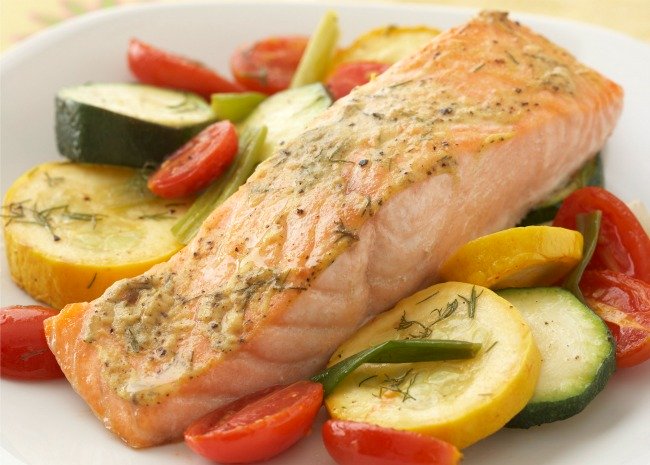
Salmon fillet with vegetable medley | Photo by Meredith
Yes, salmon hits the dinner-time trifecta. Delicious and easy to prepare, salmon is also good for you. It’s a fatty fish with plenty of heart-healthy omega-3 fatty acids, plus protein and an abundance of vitamins, including B vitamins, and the antioxidant vitamin E. To find out the difference between fresh and farmed salmon, check out Fresh Salmon Vs. Farmed Salmon: What’s the Difference?
And versatile? You bet. Salmon is tasty baked, broiled, or tossed on the grill; smoked, poached, or cast into stews; fashioned into fish cakes and burgers, added to salads, or whipped up into dips and spreads. Salmon does it all. So let’s get to it!
What to Look for When Selecting Fresh Salmon
Fresh salmon should never smell fishy. The flesh should be bright and moist and not discolored along the edges. If you’re buying a whole salmon, its eyes should be bright and clear; the skin should be silvery, shiny, and resilient to the touch.
How to Pan-Fry Salmon
A terrific method for salmon fillets, it’s quick and easy and develops a crispy, crunchy skin, too. In its simplest form, pan-fried salmon is simply salt-and-pepper seasoned fish, a little butter or olive oil, and a hot skillet over medium-high flames. Start skin-side up in the hot skillet. Don’t touch it. Let the fillet sizzle for about 5 or 6 minutes. Then slip a wide spatula underneath the salmon, turn it, and cook skin-side down for about 3 minutes. A little squeeze of lemon, and you’re golden.
Related: See how to pull out the pin bones from a fresh salmon fillet.
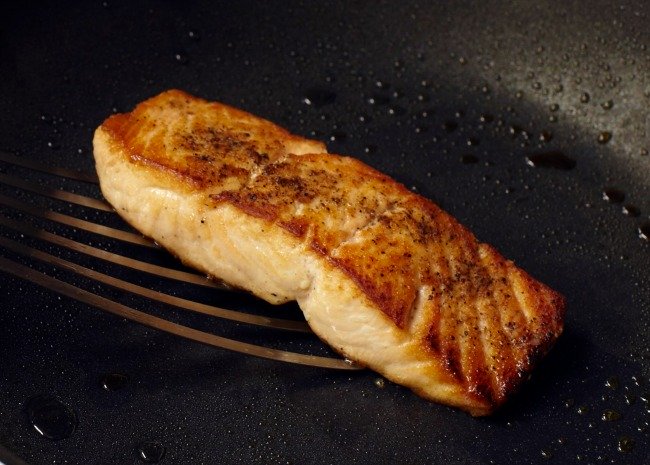
Salmon in skillet with a nice sear | Photo by Meredith
Sautéed salmon fillets are a secret weapon for fast weeknight dinners. Here are several salmon fillet meals that are ready in less than 30 minutes.
- Pan Seared Salmon I
- Blackened Salmon Fillets
- Chef John’s Salmon
Tip: If you find a good deal on flash-frozen wild salmon fillets, buy a bunch; store them in your freezer, and thaw them during the work week for quick meals. No time to thaw? Here are tips on how to cook with frozen seafood.
How to Roast Salmon in the Oven
A quick, no-nonsense way to cook salmon is oven roasting. And if you’re cooking for a group, it’s easier to fit several fillets or salmon steaks in a baking dish or sheet than a skillet. Here’s a basic roasting method: Season salmon with a little salt and pepper, and place skin-side down in a lightly greased baking dish or sheet pan; then bake in the oven at 400 degrees F for about 12 to 15 minutes. No need to flip the fish.
- Baked Dijon Salmon
- Salmon with Dill
- Chef John’s Baked Lemon Pepper Salmon
An alternate method is to broil the salmon. So quick, it’s the don’t-stray-from-the-kitchen method. Turn the oven to broil, and place seasoned fish on a sheet pan or untreated cedar plank soaked in water. Slide it onto the top rack of the oven under a red-hot-glowing broiler — about 3 inches from the heat source. Check the fish after 3 minutes. If it’s done on the outside but you like it slightly more well done in the center, turn the broiler off and let the salmon sit in the oven for a few more minutes.
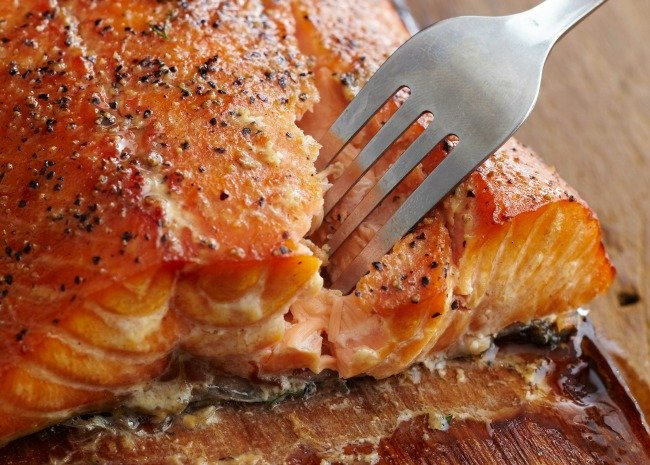
Testing the flake on Cedar Plank Salmon | Photo by Meredith
- Miso Maple-Glazed Salmon
- Lemon-Pepper Salmon II
- Melt-in-Your-Mouth Broiled Salmon
How to Take Salmon From Skillet to Oven
Can’t decide between stovetop or oven-roasted salmon? Do both. Start with the salmon in an oven-proof skillet — this time skin-side down; sizzle it for about 3 minutes in olive oil or butter; then transfer it to a lowish-heat oven, about 275 degrees F, and cook for about 20 minutes; then it’s back to the stovetop for the final crisping! Give it some high heat for about 3 minutes until the skin is crispy. If time is of the essence, you can raise the oven temp to 400 degrees F for the roasting phase, and cook it for about 10 minutes in the oven.
How to Grill Salmon
Can you handle yet another simple way to cook salmon? Grilling. It’s not just for summer anymore. The smoky flavor it imparts on salmon fillets and steaks is a serious bonus. Grilling also makes for quick clean-up work. So unless the grill is buried under 6 feet of snow, consider it in the fall, winter, and spring. Start with hot coals, and place a lightly oiled fish skin-side down on the grate. Give it a flip after 5 minutes. To turn, slide a spatula beneath the fish; if the flesh is sticking to the grate, let it go another minute or two, then try again. Cook the flipped salmon for another 5 minutes and check for doneness.
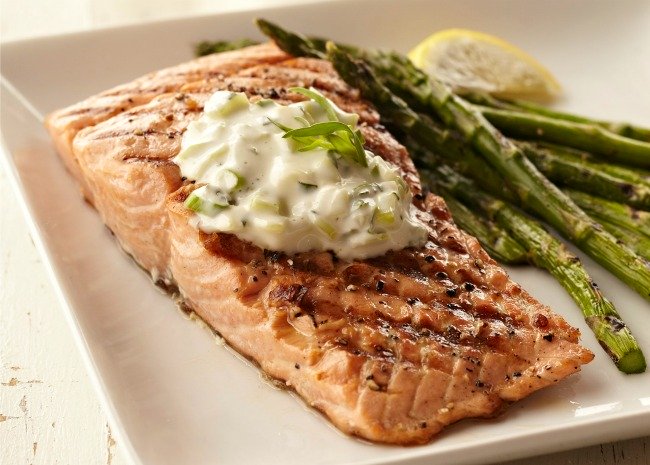
Grilled Salmon with Simple Sauce | Photo by Meredith
- Firecracker Grilled Alaska Salmon
- Grilled Salmon with Bacon and Corn Relish
- See more grilled salmon recipes.
Related: Watch Chef Tom Douglas make restaurant-quality grilled salmon at home.
How to Poach Salmon
Don’t want the added calories of cooking fats? Poaching is a fat-free cooking method. It’s also a great way to go when you’re planning on saucing your salmon — or are turning fresh salmon into salmon cakes. A basic poach involves fish fillets simmered in water flavored with a pinch of salt, a few whole peppercorns, maybe a bay leaf. There’s not much to it. Add enough water (white wine or chicken stock also work) to cover the fillet. For a gentle poach, bring the water or other liquid to a simmer, then slide the fish in, and cover the pan. Turn the heat off, and let the salmon cook gently for about 25 minutes.
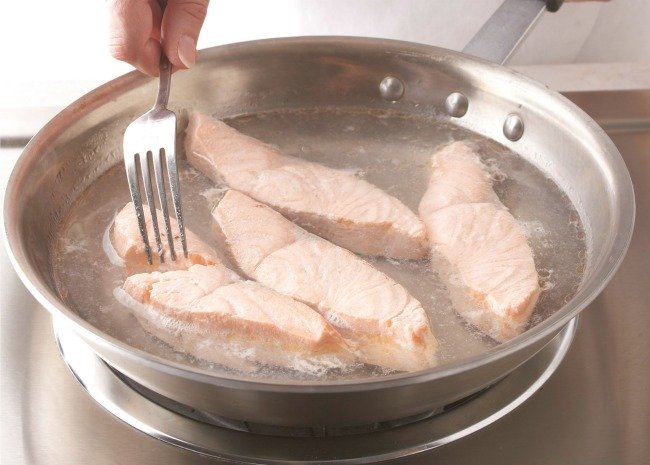
Poaching Salmon | Photo by Meredith
- Poached Salmon with Hollandaise Sauce
- Poached Salmon II
- Poached Salmon In The Microwave
How to Cook Salmon in Parchment
We could also call this salmon en papillote, but we’d have to charge a dollar more. It sounds elegant, but en pappillote is just French for “wrapped up in parchment.” Regular old foil, it should be noted, works fine, too. It’s a baking method that uses steam to cook a perfectly moist salmon. To cook your salmon in parchment, add the fish, along with seasonings (say, dill) and flavorings (lemon slices, perhaps), to parchment or foil. Close the parchment around the goodies, and bake in a 400 degree oven for about 12 to 15 minutes.
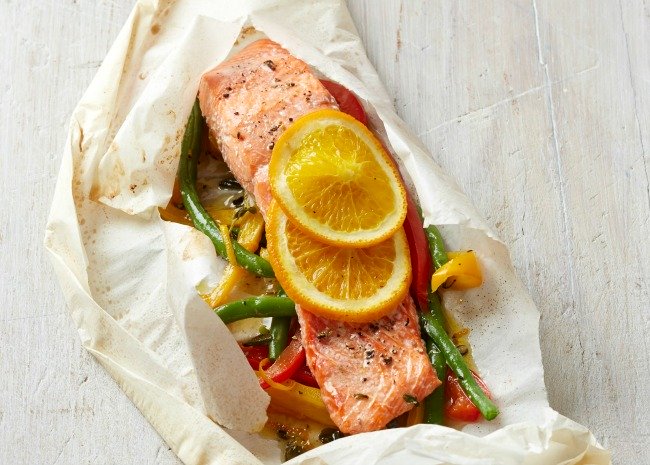
Salmon in parchment | Photo by Meredith
- Chef John’s Salmon in Parchment
- Carly’s Salmon en Papillote
- Citrus Salmon in Parchment
Three classic sauces to pair with your perfectly cooked salmon:
Basic Beurre Blanc | This wine, cream, and shallot reduction sauce is finished with butter.
Bearnaise Sauce II | A simple cream, wine vinegar, and tarragon sauce, it takes just 10 minutes to make.
Basil Cream Sauce | Essentially a pesto sauce simmered with a little cream.
How to Home Cure Salmon
Here’s a simple technique for homemade cured salmon. The brine requires just 3 ingredients: water, loads of kosher salt, and sugar. Soak slices of center-cut salmon fillet (sliced to about 1/4-inch thick) in the brine for 3 minutes, pat the fish dry, and put it in the fridge to firm up. That’s all there is to it. To the basic brine, you can add smoked salt, smoked paprika, or chipotle, if you like, to give it more of a smoked flavor. Here’s Chef John’s recipe for Quick Cured Salmon. And for more tips on technique, watch the video. Chef John also has some ideas for hot-smoking salmon on thin slices of fennel root over charcoal. It’s a gentle cooking method that delivers super-tender, wonderfully moist smoked salmon. Here’s Chef John’s recipe for Fennel-Smoked Salmon.
Canned Salmon for the Win
Don’t think you’re cheating when you cook with canned salmon. There are at least 7 benefits to canned salmon — among them: canned stays fresh longer, is typically cheaper, and has the same nutritional value as fresh salmon. Canned salmon is also super easy to work with.
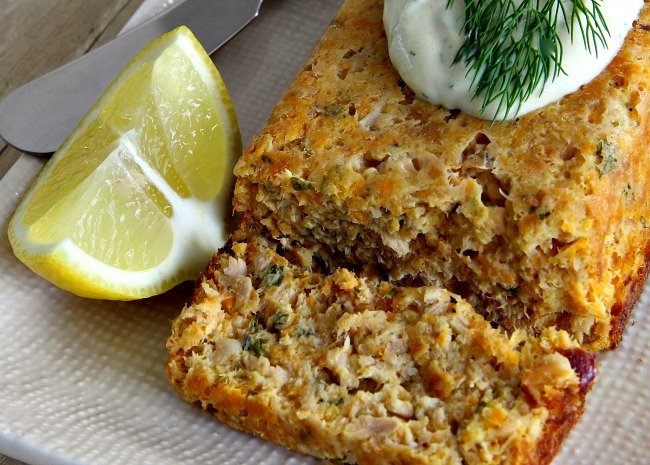
Mom’s Salmon Mousse | Photo by lutzflcat
- Creamed Salmon on Toast
- Salmon Croquettes
- Yummy Lemon Salmon Burgers
- Salmon Chowder
Related: 8 Tasty Takes on Salmon Cakes (The Perfect Weeknight Dinner)
VIDEO: How to Cook Salmon in the Oven
Now, let’s see how it’s done! This video shows you how to prep and season salmon fillets. You’ll learn which cuts deliver the most tender results and see how to get a crispy crust without overcooking the fish (plus see a great trick for pulling off the skin). You’ll also see how to judge doneness and discover why it’s best to pull salmon from the oven before it’s completely done. Check it out:
Keeping Salmon Fresh
Fresh salmon is best when eaten the same day you buy it. But it will stay for a day or two tightly wrapped in plastic and stored in the coldest part of the fridge. You can freeze salmon for up to 6 months. To thaw, take it from freezer to fridge the night before you intend to eat it. Or if time is an issue, submerge fillets in cool water; frozen fillets should be completely thawed in about an hour or two. Never thaw salmon at room temperature because bacteria can build up in the thawed outer portions even as the center remains frozen.
See our collection of top-rated salmon recipes.